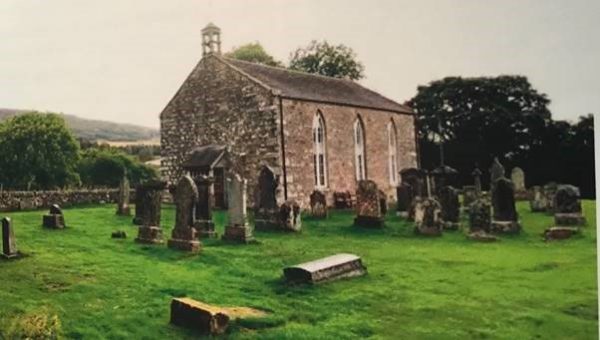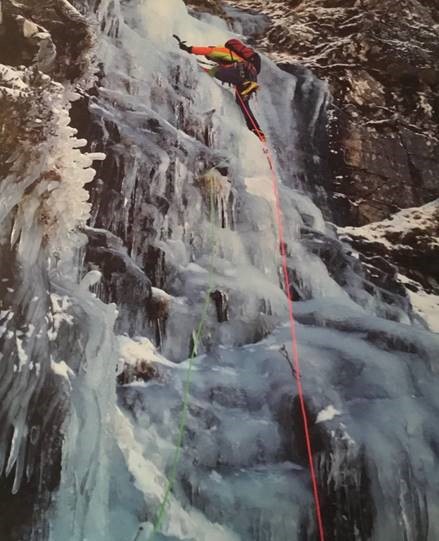
Three years ago, the Scottish Banner carried a report on the upcoming International Gathering of this oldest of Scotland’s clans. It’s the only one which still uses its original Gaelic name: Clan Donnachaidh, or the Children of Duncan. Robertsons, Duncans, Reids, and proud bearers of the many other sept names, came from around the world to the clan’s Highland Perthshire home for a week of celebrations to mark the 80th birthday of their Chief, Gilbert Robertson of Struan. Gatherings in the Clan’s homeland have been a regular annual event for a long time now. Progress with easing of current pandemic-related travel restrictions permitting, another is planned for August 2021.
Ancient historical lands
It had been Clan Donnachaidh’s unwavering support of the Jacobite monarchy through the 17th and 18th century Risings which accelerated the process whereby, by early in the last century, the clan had lost almost all its ancient historical lands. These had at one time covered more than a thousand square miles, including Lochs Tay and Tummel, and stretched as far as the gates of Perth. Yet the pride of Clanspeople across the globe in their history had remained unquenched. The result of this unquenchable spirit was first the vigorous and international renaissance of the Clan Donnachaidh Society after World War II, and then in the 1970s the raising of substantial funds to construct a Clan Donnachaidh Centre, including what was Scotland’s first purpose-built Clan Museum, at Bruar in Perthshire, very close to the Chiefs’ historical base at Struan.
Fifty years later, another dream took shape. That too has now come to fruition. It was at the time of that 2018 Gathering that clan members launched another fundraising drive: this time, for money to support an ambitious plan to purchase, from the Church of Scotland, the place where a thousand years of their ancestors lie at rest: Struan Kirk. Their dream has now been realised. A new Trust was formed, the purchase completed, and the Trust now owns the Kirk with a mandate to preserve this place of peace and beauty in perpetuity.
Over the past two years, a programme of substantial repairs to roof, doors, windows and entrance porch has been carried out to safeguard the building’s future as a place both of worship and of gathering. Challenges ranging from Highland winters to rare bats requiring protection under the law, and from commissioning and installing fine new stonework to dealing with serious issues around heating, ventilation and water needs, have been faced and successfully overcome. While less radical than the entirely new church building which had been constructed some two centuries earlier, this rescue of what the Clan has always regarded as its own spiritual home was the second time in a very long history when Robertsons and other Clan Donnachaidh names had stepped in to save this special part of their heritage.
A sacred site

To understand the significance of the place where this happened, we have to go back some 1300 years — before Picts and Scots had united into one people — to when Christianity first came to Highland Perthshire. The point where the River Garry meets Errochty Water, where the kirk stands, was likely to have already been a sacred site when a tonsured monk, from Iona in the Hebrides, chose this spot as the place where he would preach the gospel in Perthshire for the first time. Errochty means assembly place in Gaelic, and Struan means stream or the place of streams. A succession of church buildings were erected there over the centuries, wooden initially, the first one dedicated to St. Fillan, a legendary Scottish Saint originally from Ireland, and later built of stone. An 8th century bronze handbell known as St. Fillan’s bell, now in Perth Museum, was quite possibly one which marked the calling to prayer and the rituals of early worship at Struan.
By the 15th century, Struan was absolutely at the core of the Clan’s extensive lands, and the churchyard had by then become the burial place of the early chiefs, as of members of the local cadet houses and indeed of many others of the Clan. A Highlander laid great store by letting his dust mingle with that of his ancestor. The parish of Struan was in due course united with Blair Atholl and others locally, some time before 1638. About two hundred years after that, the then Duke of Atholl, with support from the Dunkeld presbytery, proposed the kirk’s suppression, partly because of its very poor state of repair. The Clan would have none of it. 1,500 heads of household in the area signed a petition that ‘Strowan shall be rebuilt on the old ruins, preserving what will always be very dear to them, the stance of their ancient altar and the graves of their kindred and friends.’ The heritors went to law and appealed their way to the Lords of Council and Session, the highest court in the land. Its decision was that Struan Kirk could not be closed. Led by Duncan Robertson of Kindrochit, plans for a new church were submitted by Clan members in 1826, and construction was completed in 1828.
Spiritual home of the Clan
Some remodelling of the interior was carried out in 1938, and further improvements in the 1960s, partly funded by the Clan Society, included a new baptismal font. It was this 19th century building and spiritual home of the Clan which has now been rescued for posterity.
Clan Donnachaidh continues to look to the future with new initiatives, but always with an eye to and a connection with its history. One such is the Clan Donnachaidh Youth Award, launched in 2018 to coincide with Scotland’s Year of Young People. The award is given annually to a youngster living in Perth and Kinross — chosen by the Clan from nominations put forward by teachers, parents or peers — who has shown exceptional courage and determination in overcoming disadvantage or difficulty. The award was inspired by Clan Donnachaidh’s first chief’s legendary ancient friendship with King Robert the Bruce, and by the old story of how Bruce, on the run from the English redcoats and hiding in a cave at the lowest ebb in his fortunes, watched a spider refuse defeat and “try, try and try again” before finally succeeding in spinning its web across the cave.
The accompanying shot of one of its young Clansmen climbing in the Grampians illustrates the sort of courage and determination of which the Clan is so proud.
For more information on Clan Donnachaidh and its Society visit: www.donnachaidh.com


Is there a Clan Gathering planned for 2022? My husband and I will be travelling to Scotland in late July this year, and we’d love to attend, if so.
The Chief’s goal now is to obtain proximate land for parking.